Iceland: Day 10 - Leirhnjúkur
July 4, 2004
During the 5 years after the explosion of the Krafla volcano in 1724, earthquakes openend up a series of volcanic fissures west of Krafla at Leirhnjúkur, producing the lava flows which so nearly destroyed Reykjalíð's church. More recently, a similar spate of earthquakes caused a new line of activity north ad Gjástykki between 1977 and 1984 in what came to be called the Krafla Fires, and it's this mass of stil-steaming lava rubble that is the main draw here today.
What in fact happens at Krafla and Leirhnjúkur is that the ground is pulled from both sides by continental drift. Every 200 years or so, it suddenly gives way about 10 times over a decade or two. Each time it does, vast fissures open up, sometimes over 20 miles long, and lava spurts out along the entire length of them. The last lot of eruptions at Krafla occurred between 1975 and 1984, but geologists believe that the eruptive series is not over. The ground has swollen upwards by about half a metre since the last eruption, indicating a very full magma chamber, two miles beneath the surface.
While taking the trail to the Leirhnjúkur crater we came across a tour bus of tourists who had obviously ignored the trailhead signs and were coming back with not just a nugget or 2 of the recently formed lava rock, but with whole armloads of the stuff. We also got excited at the thought of having finally met some other Canadian visitors but the couple turned out to be from New York.
After Leirhnjúkur we headed back to our campsite to have lunch and pack up our tent. At this point we had driven approximately 2000 km with out rental car.
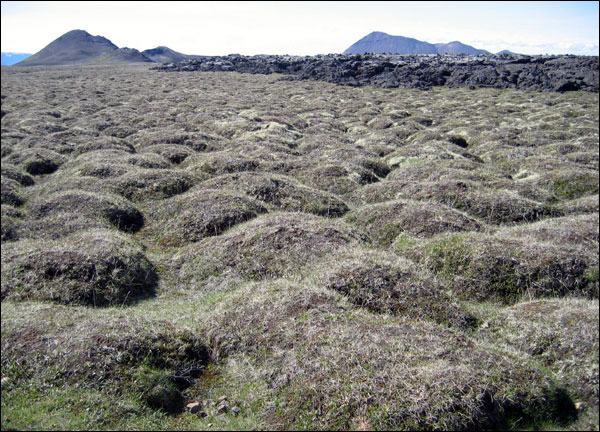
Older lava rubble is starting to get covered by grass but you can see newer lava rocks further back.
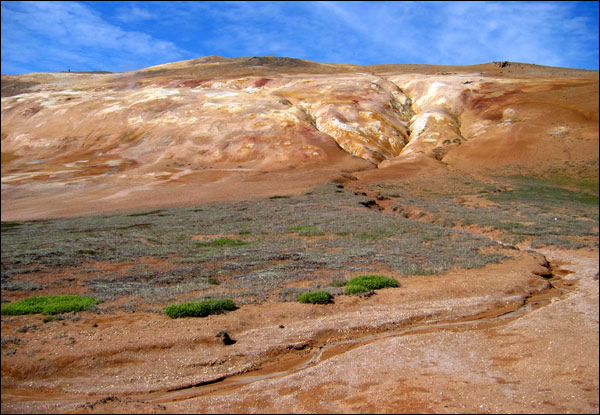
The rhyolite hill at Leirhnjúkur.
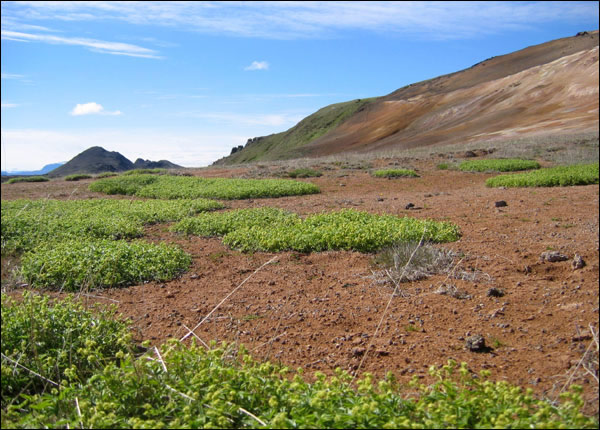
It's amazing how hardy these plants must be to grow in this area.
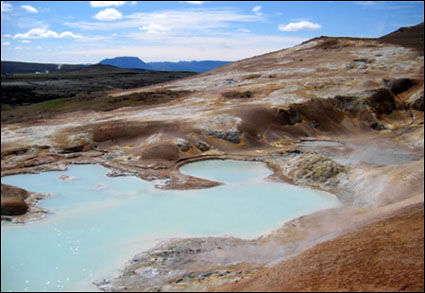
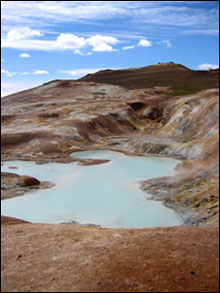
Steam rises off the blue egg-smelling waters of the Leirhnjúkur crater.
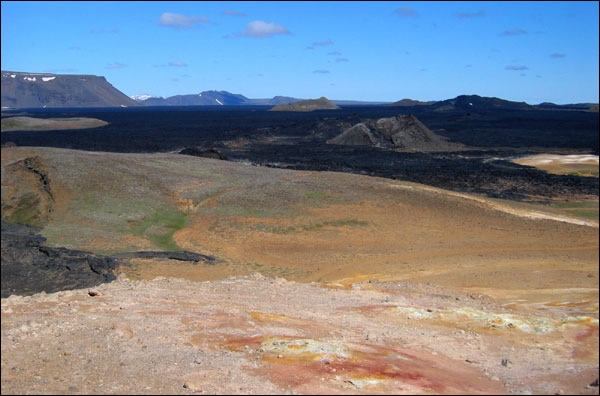
"Islands" in a sea of black lava rock.
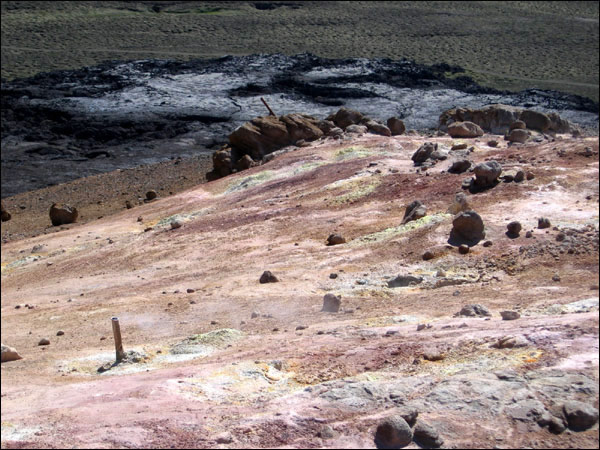
Thin layers of soil and minerals from the steam coming out of geothermal vents colour the ground.
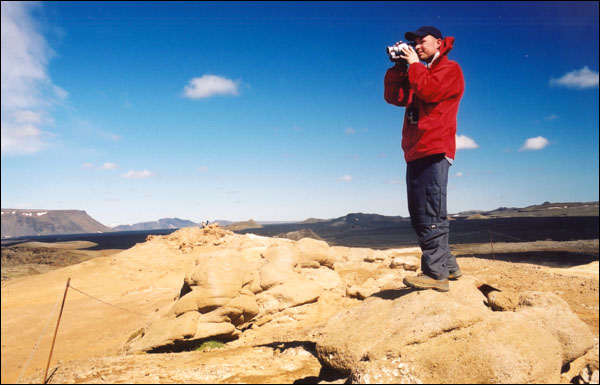
Rubby checks out the view from the top of the hill.
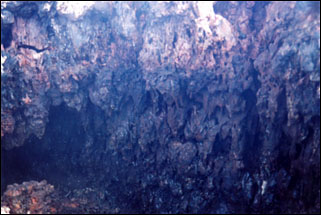
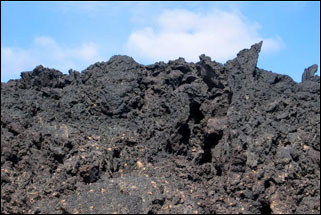
The bubbly lava solidifies into strange formations.
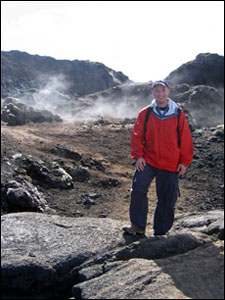
Rubby examine the still-steaming lava rocks from the 1984 eruptions.
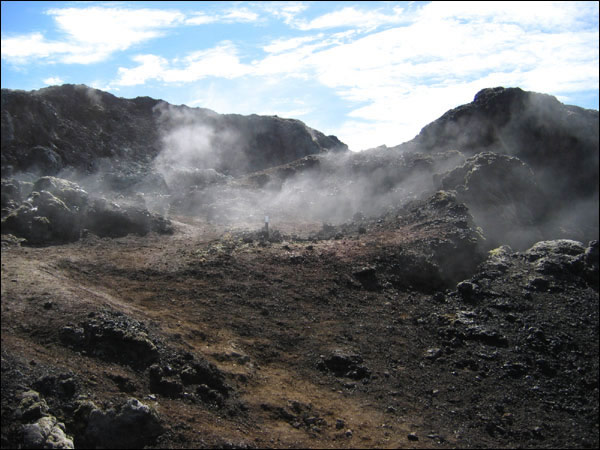
Could all this hot steam be coming from that supposed magma chamber 2 miles below the surface?
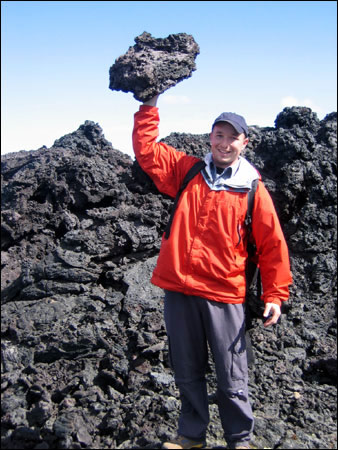
Rubby displays his superhuman strength.
[ Iceland Vacation Home Page ]